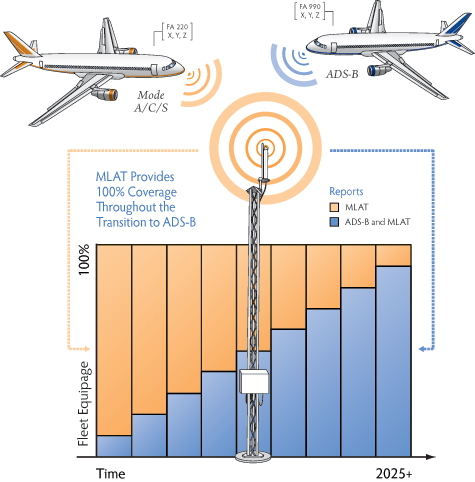| In the future ADS-B environment, today’s secondary surveillance radars will essentially be decommissioned or become backup systems. ANSPs that have announced ADS-B programs, such as Airservices Australia and the FAA, have also stated their intention to correspondingly reduce their SSR installations by as much as 50 percent. Many ANSPs are also considering multilateration as a more economical solution to future backup requirements, after analyzing the continuing costs of SSR maintenance, power, fuel and other expenditures. Another key consideration is that multilateration systems have built-in ADS-B capabilities, with today’s ground-based multilateration sensors capable of tracking aircraft ADS-B transmissions as equally effective as those from Modes A, C, S and military IFF transponders. Four other important considerations also arise. First, an installation of a multilateration network, to either serve a new area of airspace or to replace a legacy SSR, will be the initial step towards the eventual transition to ADS-B. This is so because the newly installed network can immediately track early-equipped ADS-B aircraft. Second, as the transition to ADS-B draws closer, multilateration sensors can serve as full-featured ADS-B ground stations at significant cost savings. Third, the already installed multilateration network can perform both essential ADS-B backup and validation functions. Finally, the multilateration system will continue to track non-ADS-B traffic throughout and beyond the authorities’ lengthy expected transition period, making the service available at minimal or no additional cost to the ANSP. | | 
Because MLAT is backward compatible with existing SSR transponders and forward compatible with ADS-B, it provides full fleet coverage today and in the future — independent of the pace of aircraft equipage. |

